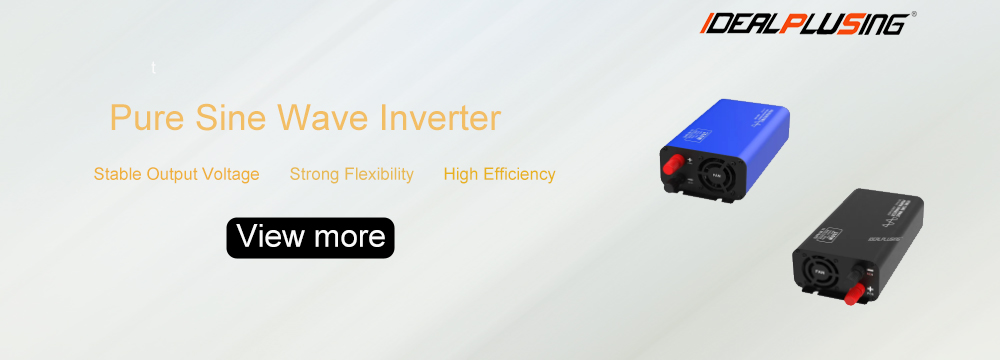With the rapid development of society, our photovoltaic inverters are also developing rapidly. Do you know the detailed information analysis of photovoltaic inverters? Next, let the editor lead you to learn about the relevant knowledge in detail.
1. What is a photovoltaic inverter?
Europe/Middle East/Africa (EMEA) has always been the region with the largest demand for photovoltaic inverter replacement, because the core markets in this region, such as Germany, Italy, Spain, Czech Republic and Bulgaria, have experienced the early prosperity of the solar market, and the installed share of photovoltaic systems over five years is the largest.
With the approach of grid parity, cost reduction, efficiency improvement and intelligent upgrading have become urgent needs of the photovoltaic industry. As a key equipment for photovoltaic power generation, inverters are constantly updated and iterated under the stimulation of favorable policies, becoming the "engine" to promote the era of grid parity. According to the latest forecast of IHS, in 2019 alone, more than 11 million photovoltaic inverters will be shipped to all parts of the world, most of which will be connected to the software platform and controlled by the inverter company. At the same time, the new development situation has also put forward higher requirements for the power level, voltage level, capacity ratio, overload capacity, etc. of the inverter, which has entered a new stage in the development of inverter technology and market.
As photovoltaic inverters move towards digitalization and intelligence, more and more energy management functions will be added. The first is photovoltaic energy storage management function. The importance of energy storage for large-scale grid connection of photovoltaic and other new energy sources is self-evident. The application of photovoltaic storage systems further drives the inverter to evolve into a power station energy management center. The second is the safety management function. Inverters equipped with DC arc detection, component rapid shutdown and protection skills have evolved the safety protection of photovoltaic power stations from passive to active. The third is the automatic monitoring and early warning operation and maintenance management function. The fourth is the household microgrid management function.
2. The role of photovoltaic inverters
2.1 Maximum power tracking function
The current and voltage of solar panels change with the intensity of solar radiation and the temperature of the solar cell components themselves, so the output power will also change. In order to maximize the output power, the maximum output power of the solar panel should be obtained as much as possible. The MPPT tracking function of the inverter is designed for this feature.
2.2 Anti-single operation function
Anti-islanding devices are generally configured in the inverter. When the grid voltage is 0, the inverter will stop working. The reason for doing this is mainly for the safety of the power grid.
2.3 Automatic operation and shutdown function
After sunrise in the morning, the intensity of solar radiation gradually increases, and the output of the solar cell also increases accordingly. When the output power required for the inverter to work is reached, the inverter automatically starts to run. After entering operation, the inverter will monitor the output of the solar cell module at all times. As long as the output power of the solar cell module is greater than the output power required for the inverter to work, the inverter will continue to run; until the sunset, the inverter can also run even on rainy days. When the output of the solar cell module becomes smaller and the inverter output is close to 0, the inverter will form a standby state.

3. The role of photovoltaic inverters in photovoltaic power stations
Photovoltaic inverters not only have the function of direct-to-alternating conversion, but also have the function of maximizing the function of solar cells and system fault protection. In summary, there are active operation and shutdown functions, maximum power tracking control function, anti-independent operation function (for grid-connected system), active voltage adjustment function (for grid-connected system), DC detection function (for grid-connected system), and DC grounding detection function (for grid-connected system). Here we briefly introduce the active operation and shutdown function and the maximum power tracking control function.
3.1 Active operation and shutdown function
After sunrise in the morning, the intensity of solar radiation gradually increases, and the output of solar cells also increases accordingly. When the output power required by the inverter task is reached, the inverter automatically starts to run. After entering the operation, the inverter monitors the output of the solar cell module at all times. As long as the output power of the solar cell module is greater than the output power required by the inverter task, the inverter will continue to operate; until the sunset is shut down, even on rainy days, the inverter can operate. When the output of the solar cell module becomes smaller and the inverter output is close to 0, the inverter will enter the standby state.
3.2 Maximum Power Tracking Control Function
The output of the solar cell module changes with the intensity of solar radiation and the temperature of the solar cell module itself (chip temperature). In addition, because the solar cell module has the characteristic that the voltage decreases as the current increases, there is an optimal working point that can obtain the maximum power. The intensity of solar radiation is changing, and obviously the optimal working point is also changing. In relation to these changes, the working point of the solar cell module is always at the maximum power point, and the system always obtains the maximum power output from the solar cell module. This control is the maximum power tracking control. The biggest feature of the inverter used in the solar power generation system is that it includes the maximum power point tracking (MPPT) function.
4. Classification and selection of photovoltaic inverters
An inverter is a device that converts direct current into alternating current, and a photovoltaic inverter is an inverter designed for photovoltaic power generation systems. Photovoltaic inverters are an important part of photovoltaic power generation systems. The core of photovoltaic power generation is to use photovoltaic modules to convert solar energy into electrical energy. However, since photovoltaic modules can only generate direct current, and the size is related to the intensity of sunlight, it is difficult to use directly. Therefore, this direct current needs to be converted into the commonly used alternating current through a photovoltaic inverter to facilitate the transmission and use of electricity.
4.1 Classification of photovoltaic inverters
Photovoltaic inverters can be mainly divided into grid-connected inverters, off-grid inverters and micro-inverters according to their functions.
4.1.1 Grid-connected inverters
Grid-connected inverters are mainly used for grid-connected photovoltaic systems, and the converted current is usually input into the national grid. Grid-connected inverters can be divided into four categories according to power and purpose: micro-inverters, string inverters, centralized inverters, and distributed inverters.
Micro-inverters, also known as component inverters, have power levels of 180W to 1000W and are suitable for small power generation systems.
String inverters are single-phase inverters with a power of 1KW to 10KW, suitable for household power generation systems, and the grid-connected voltage is 220V. 4KW to 80KW three-phase inverters are suitable for industrial and commercial power generation systems.
Centralized inverters and distributed inverters, with power ranging from 500KW to 1500KW, are generally used in large ground power stations.
4.1.2 Off-grid inverters
Off-grid inverters are suitable for independent off-grid photovoltaic systems. The converted current can be stored in batteries in addition to self-use.
4.1.3 Microgrid inverters
Microgrid inverters will be connected to the solar panels separately to better improve the conversion efficiency.
4.2 Selection of photovoltaic inverters
There are many types of inverters, so special attention should be paid when selecting the model and capacity. Especially in solar power generation systems, the efficiency of the inverter is an important factor in determining the capacity of solar cells and batteries.
The selection of inverters must first consider sufficient rated capacity to meet the power requirements of the equipment under maximum load. For inverters with a single device as load, the selection of rated capacity is relatively simple.
When the electrical equipment is a pure resistive load or the power factor is greater than 0.9, the rated capacity of the inverter can be selected to be 1.1-1.15 times the capacity of the electrical equipment. At the same time, the inverter should also have the ability to resist capacitive and inductive load shocks.
For general inductive loads, such as motors, refrigerators, air conditioners, washing machines, high-power water pumps, etc., when starting, their instantaneous power may be 5-6 times their rated power. At this time, the inverter will withstand a large instantaneous surge. For such systems, the rated capacity of the inverter should have sufficient margin to ensure reliable load starting. High-performance inverters can achieve multiple continuous full-load starts without damaging power devices. For the sake of their own safety, small inverters sometimes need to use soft start or current limiting start.
Share our interesting knowledge and stories on social media














